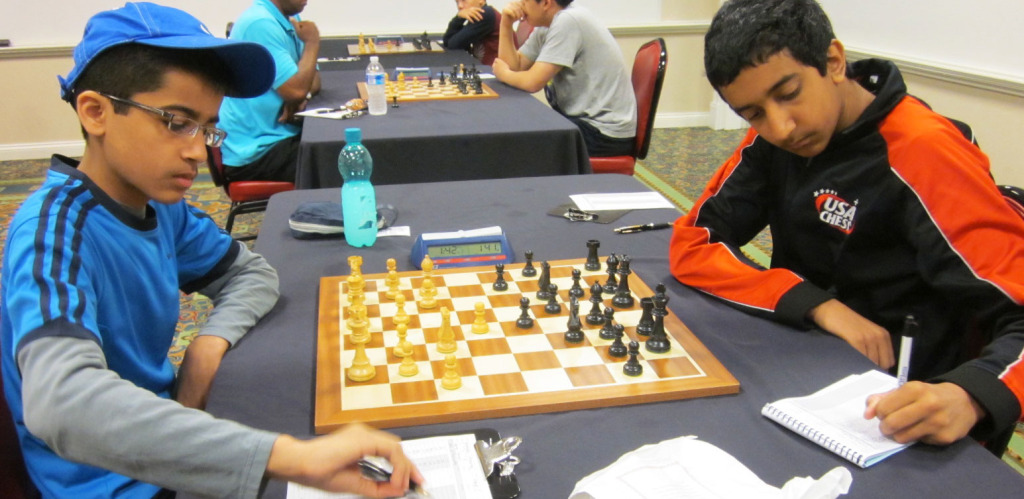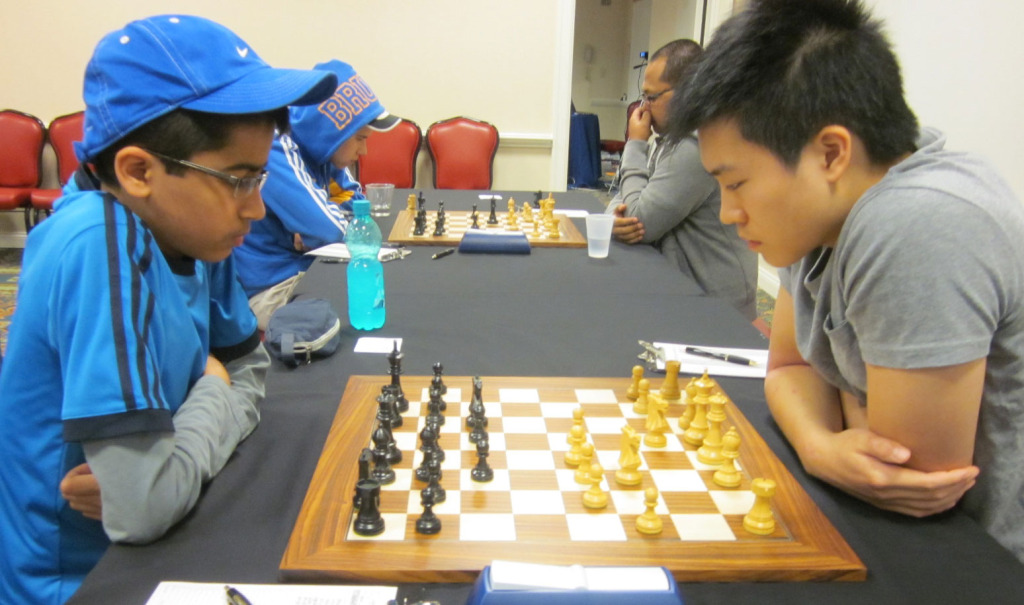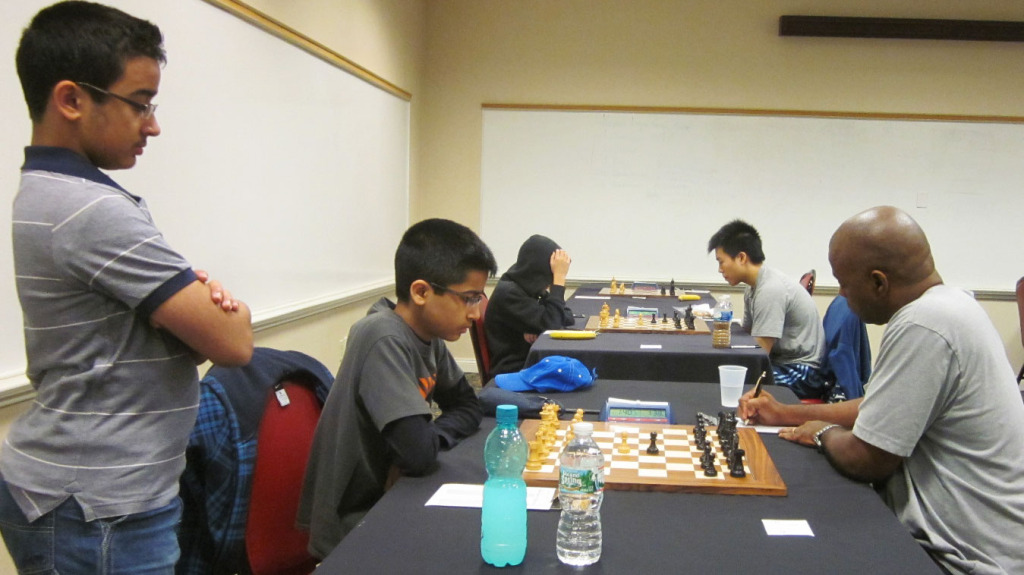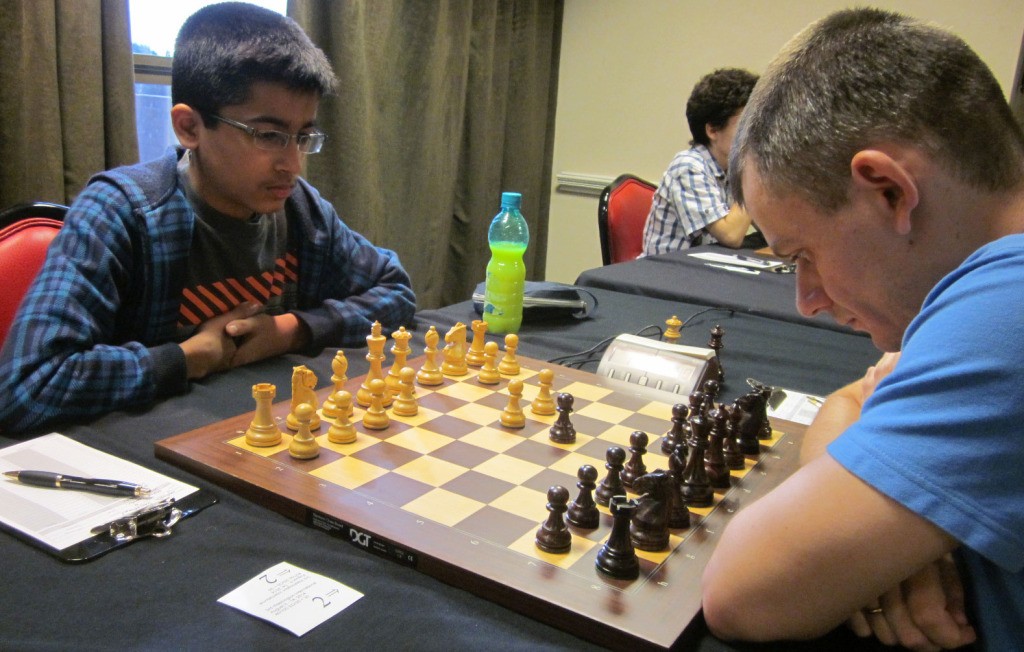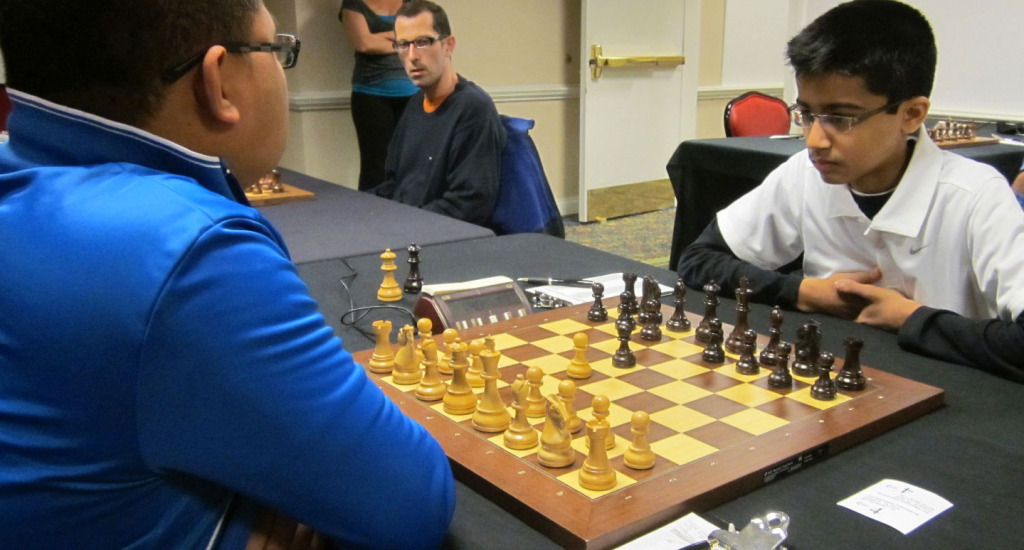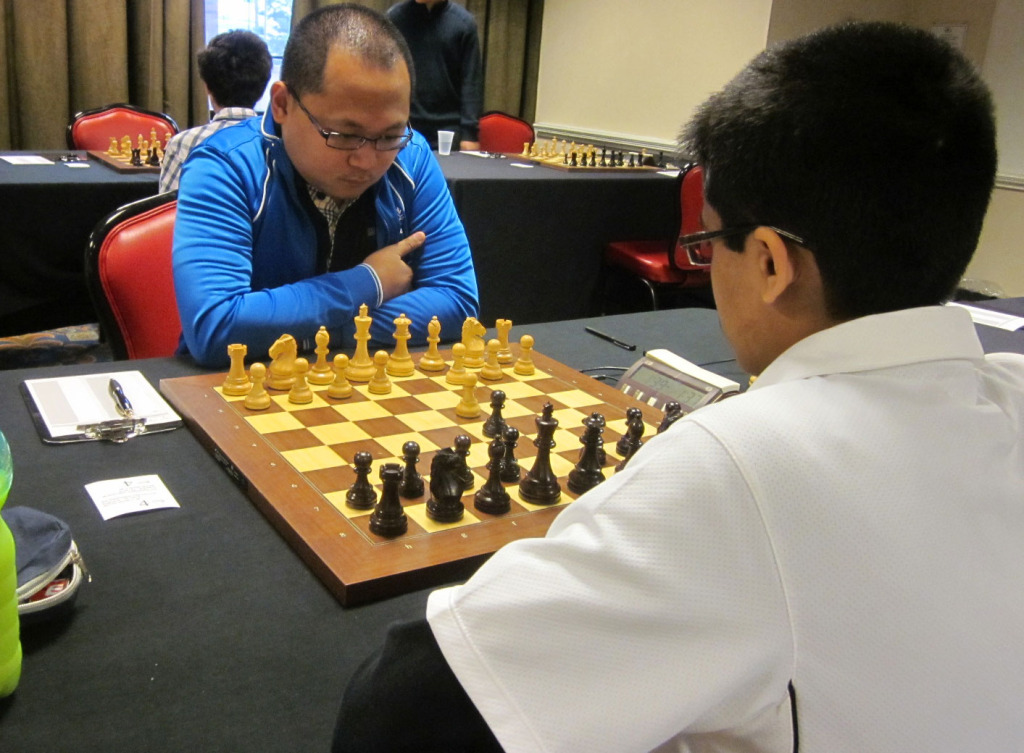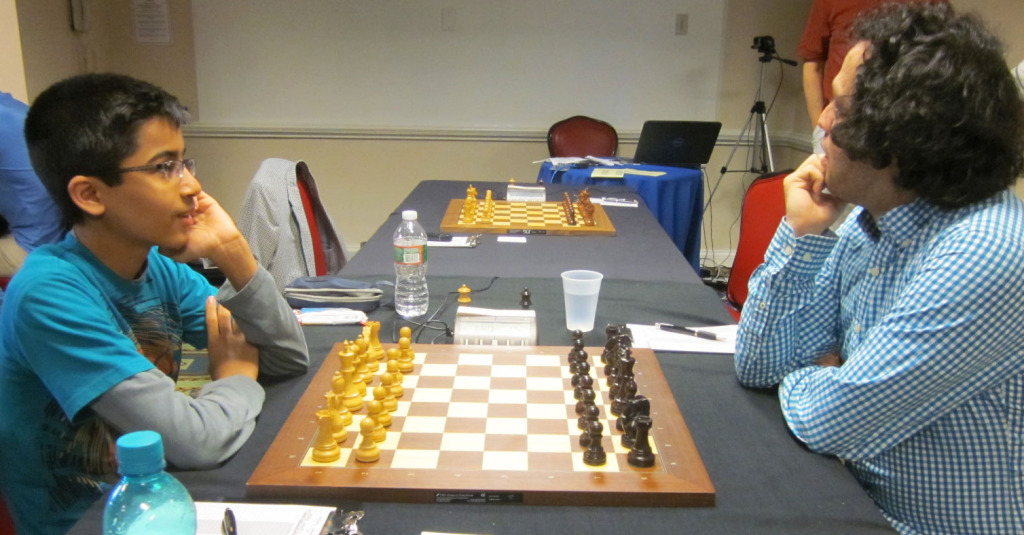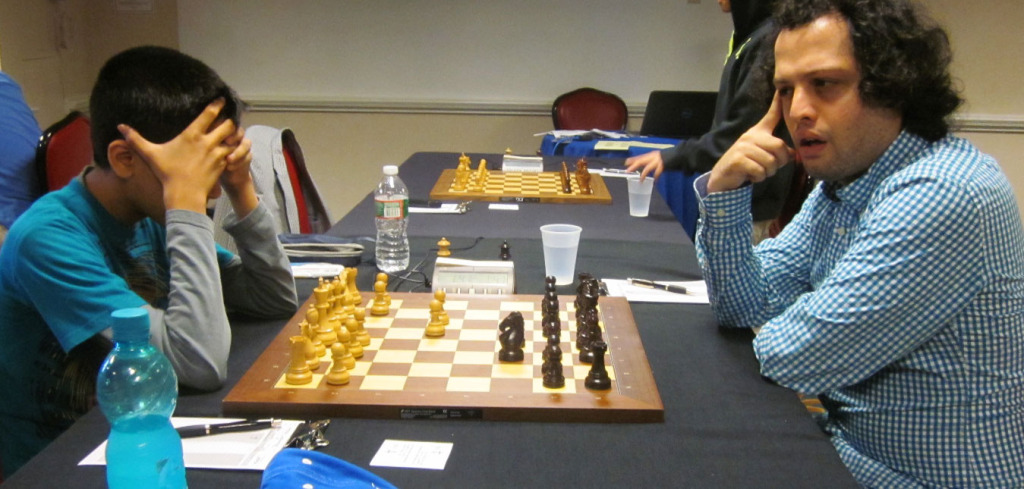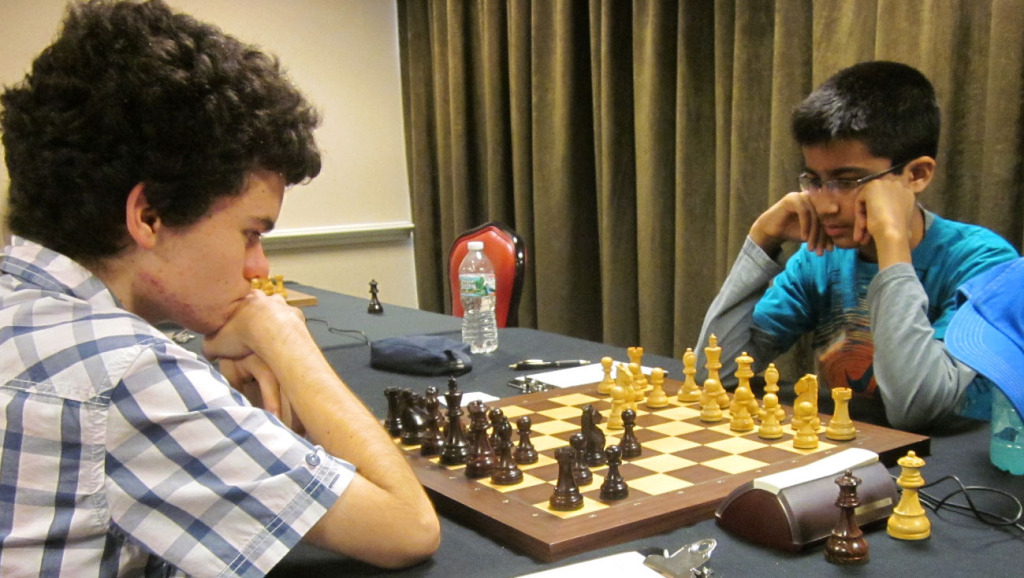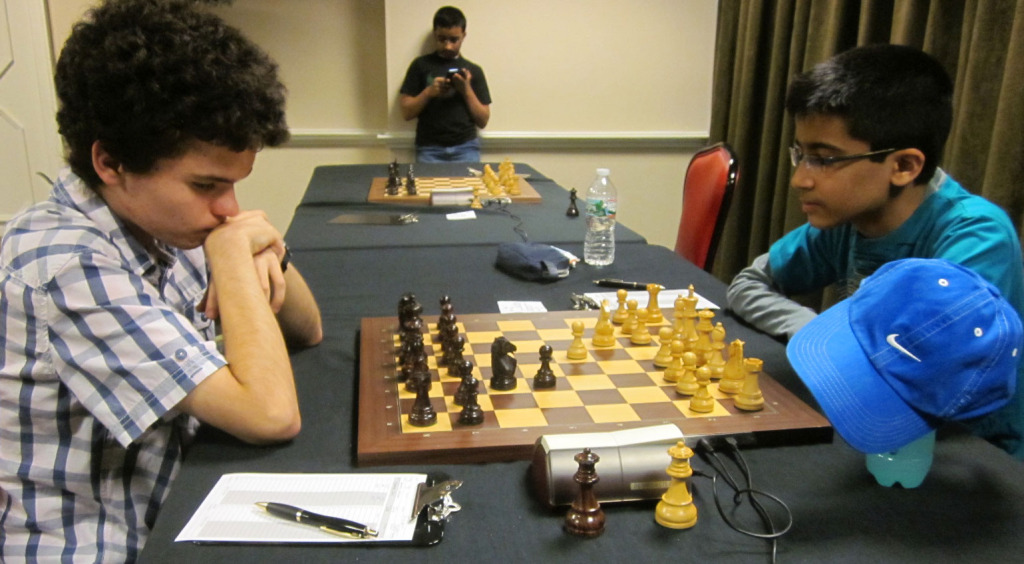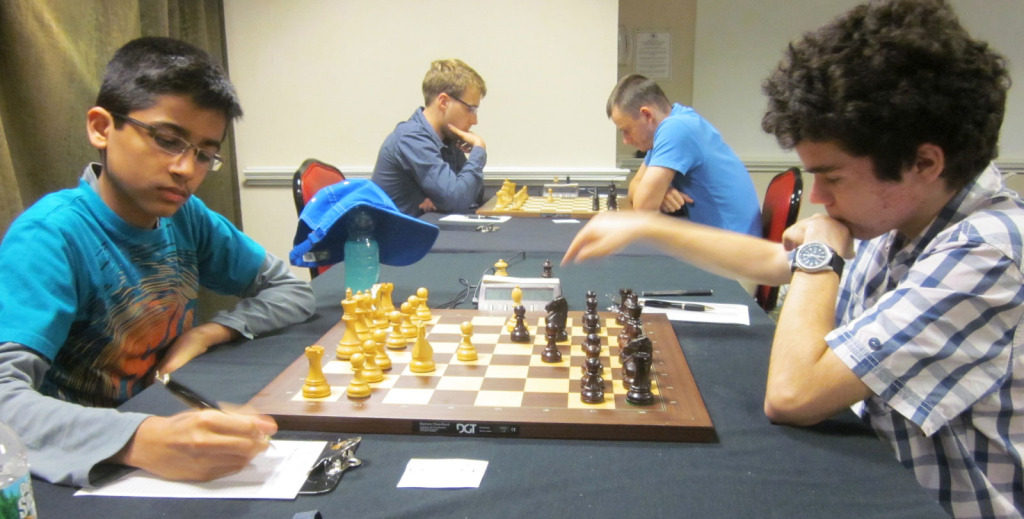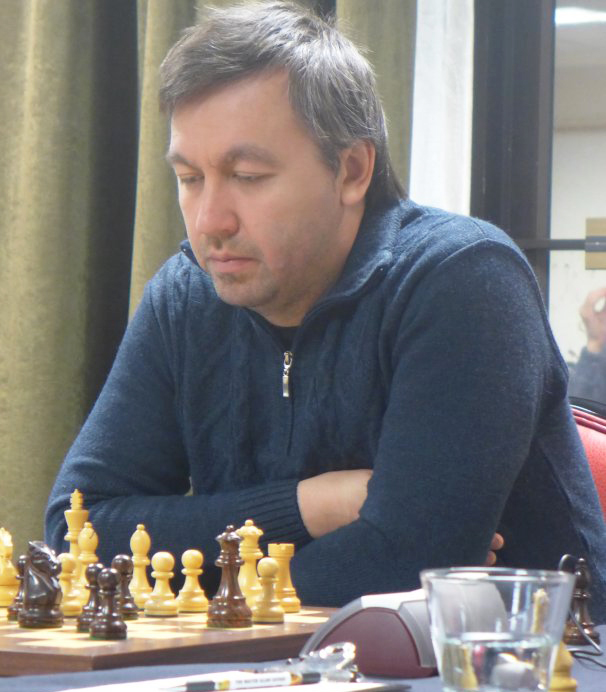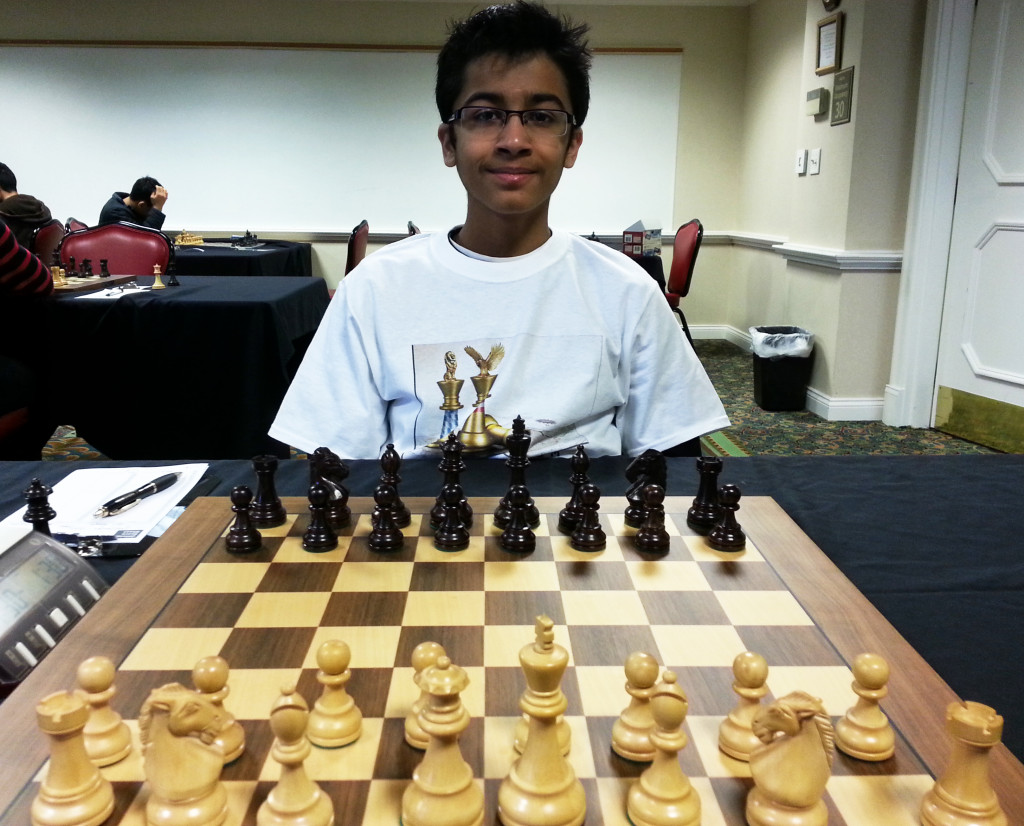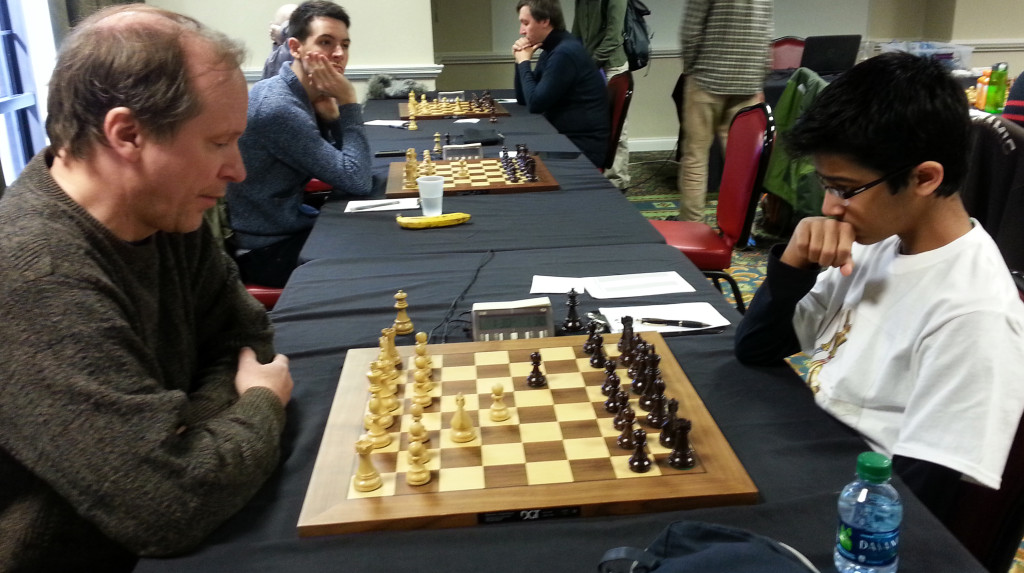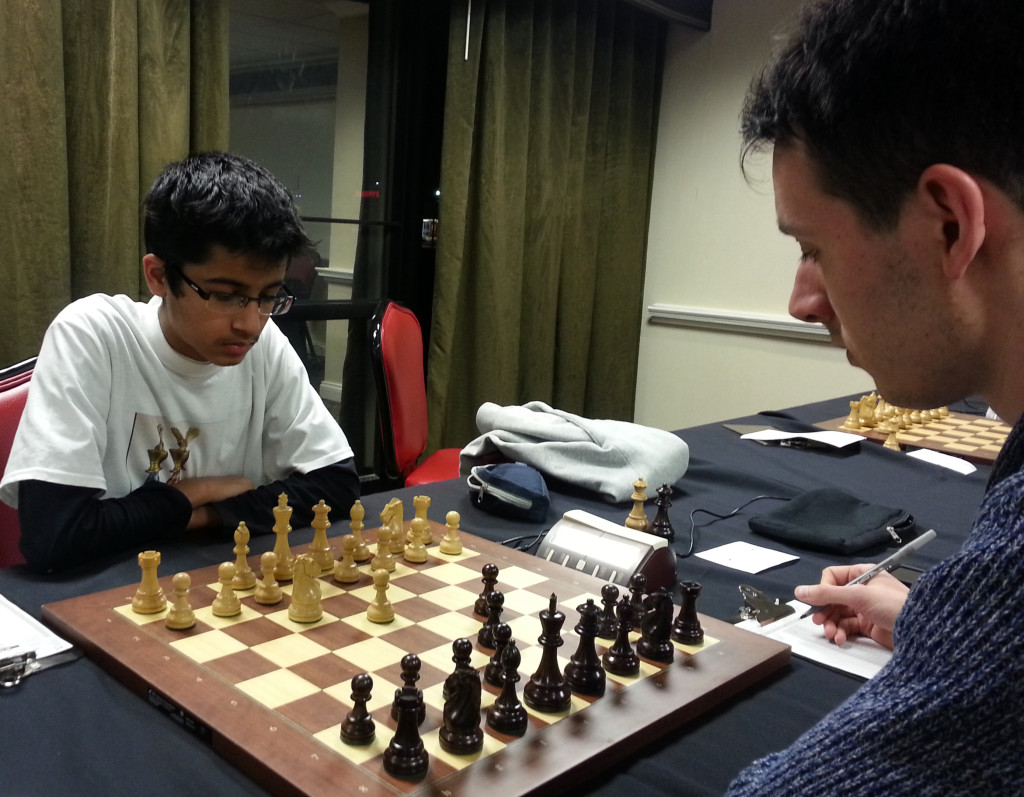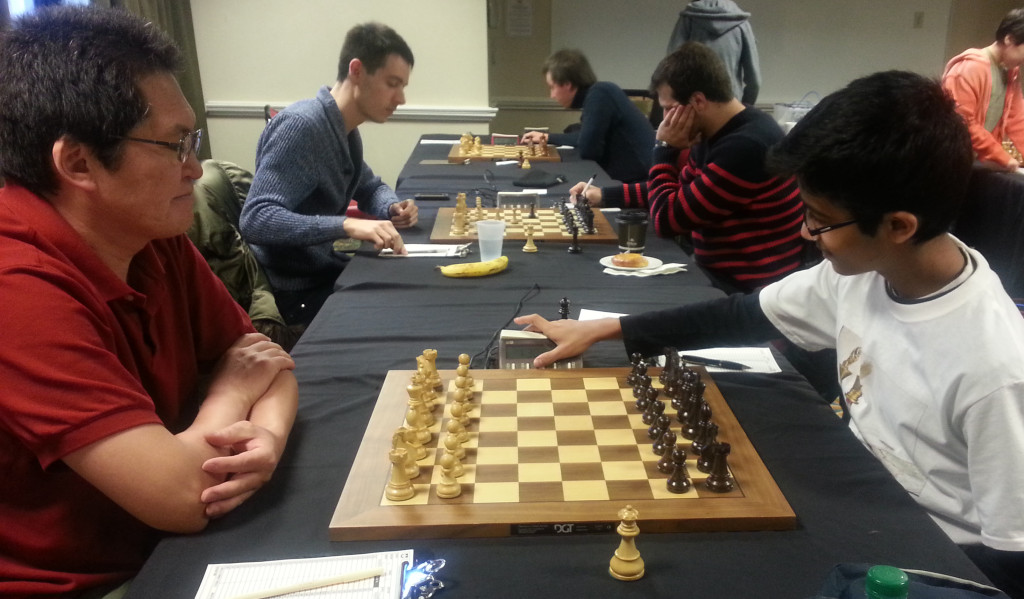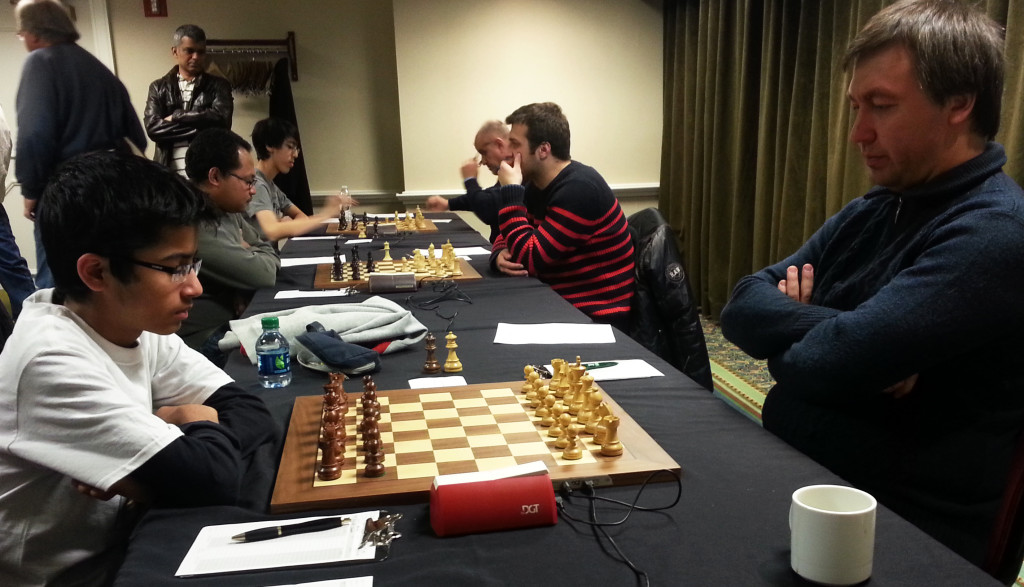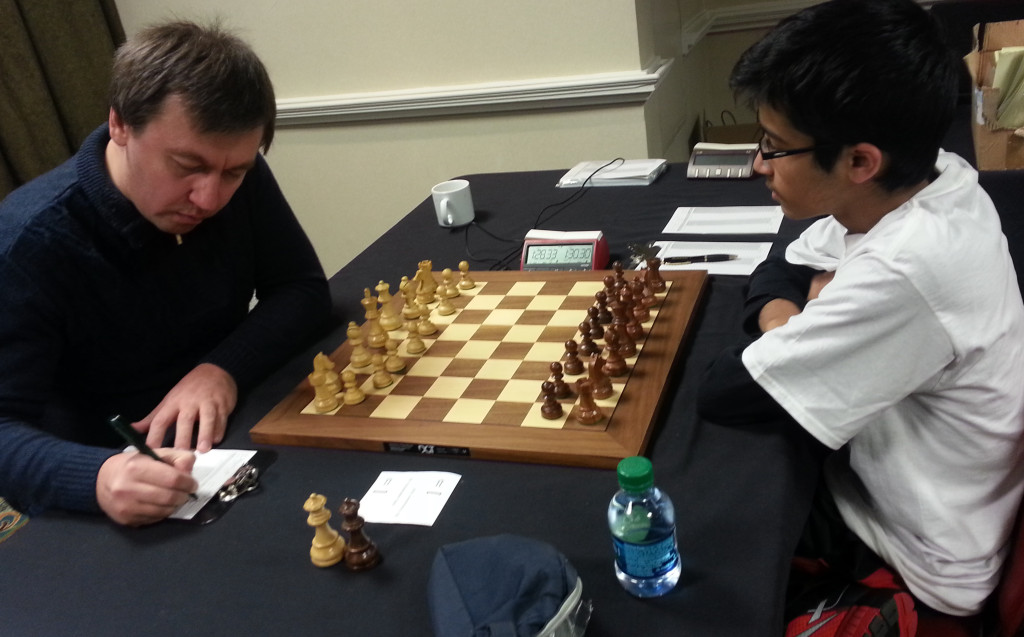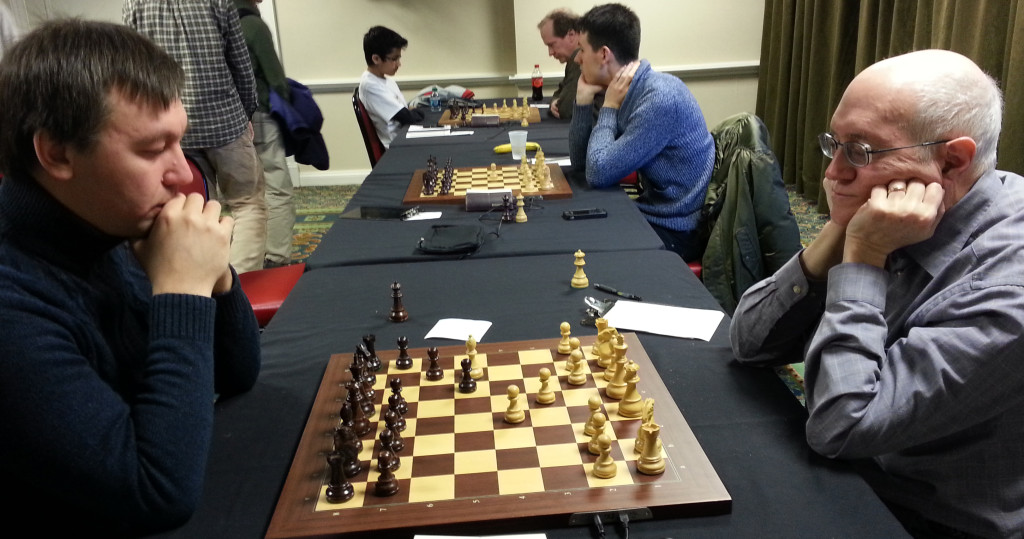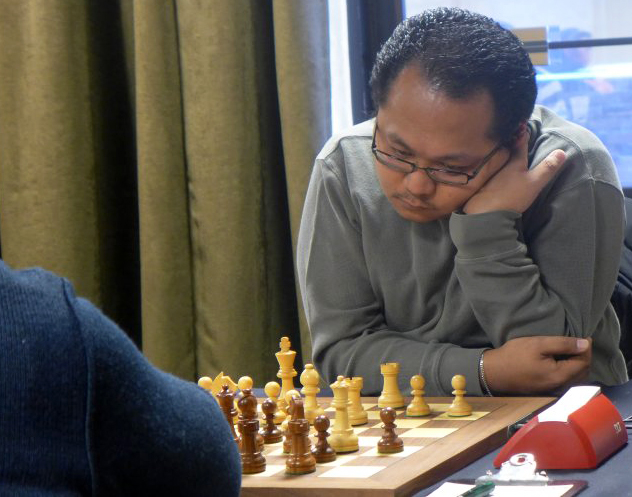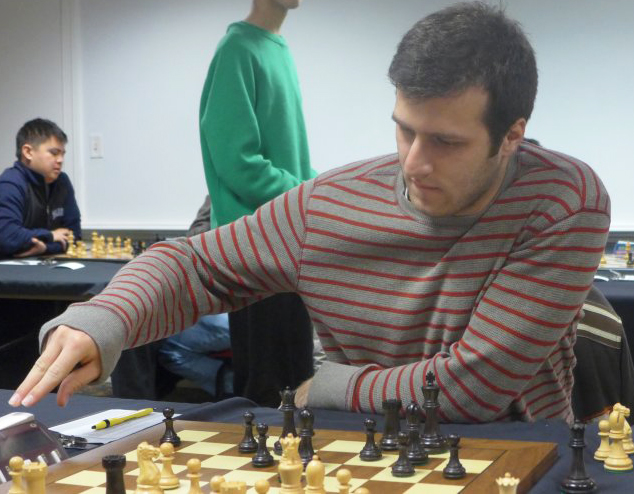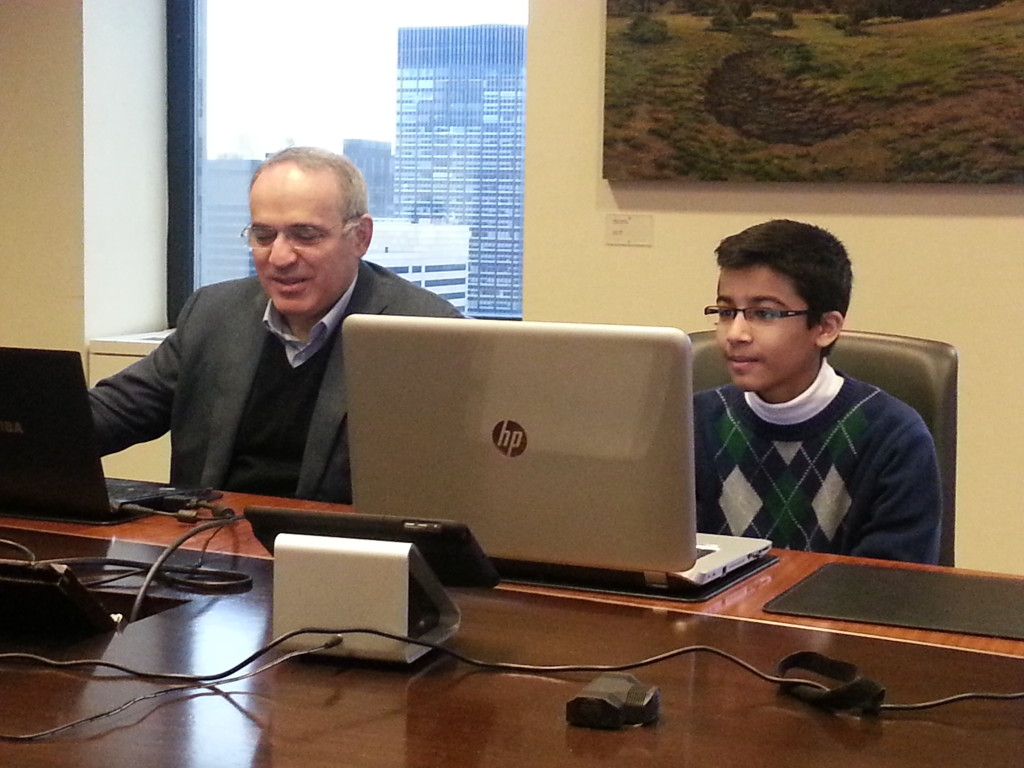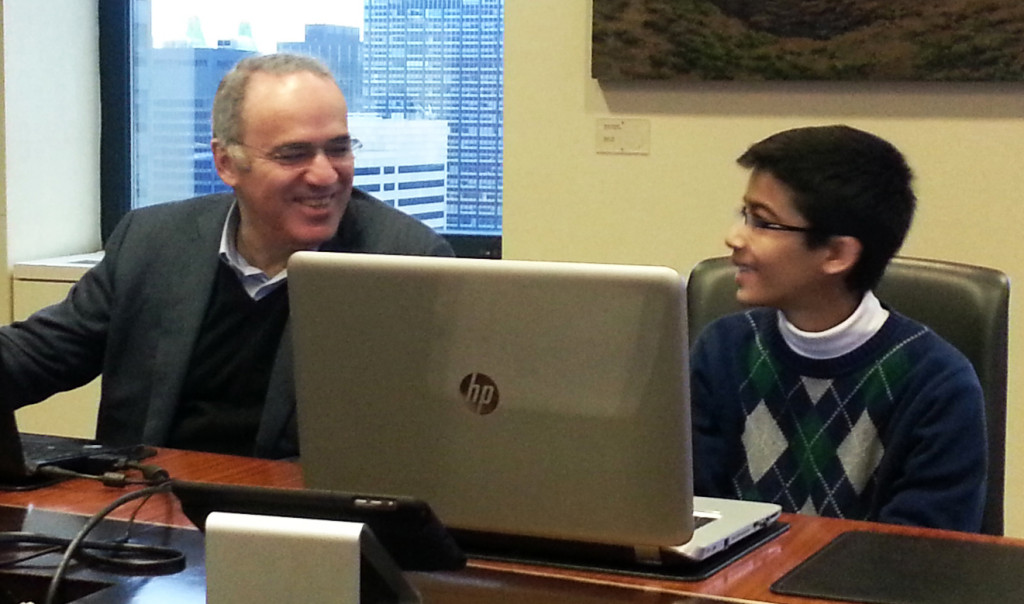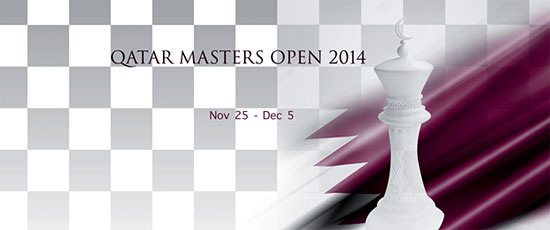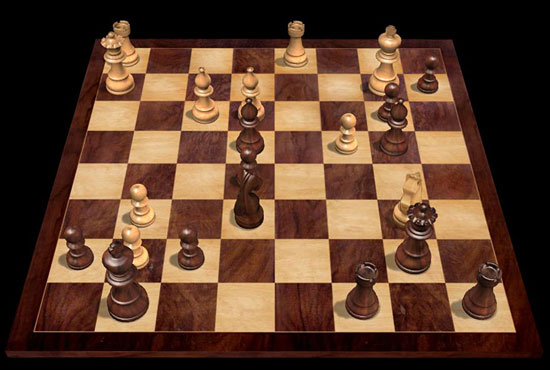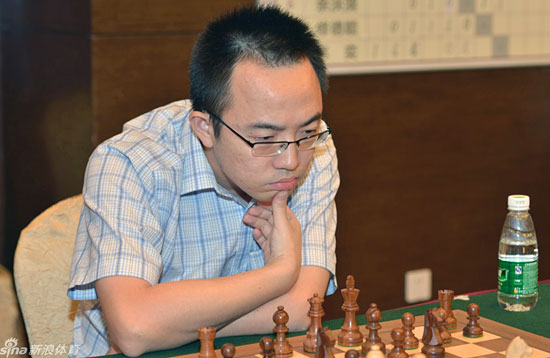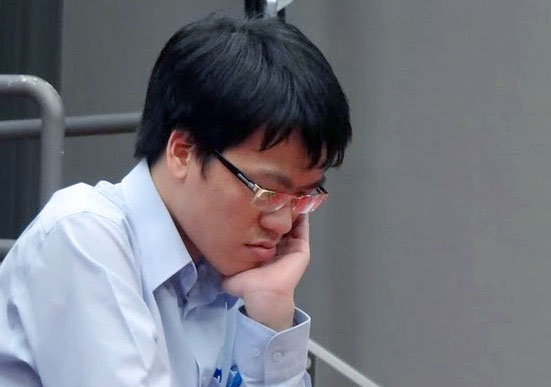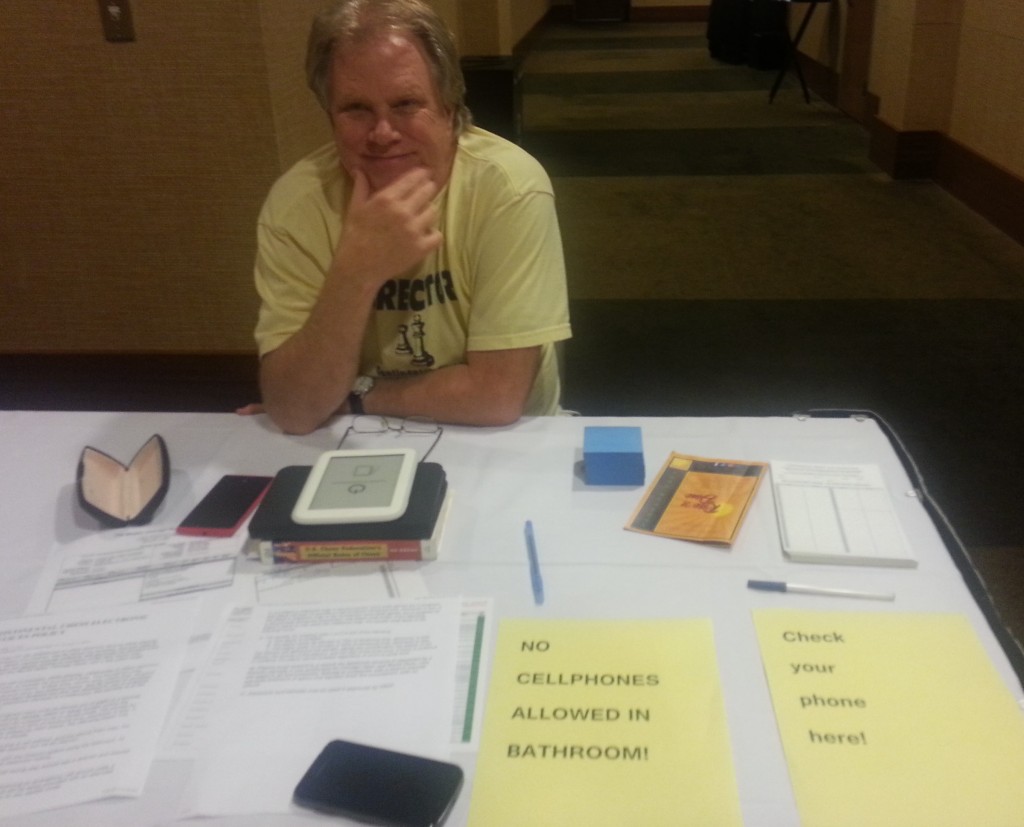Rockville, Maryland. That’s where I was headed next for the Washington International 2014 chess tournament. I was extremely excited for this chess tournament, and eager to make amends for the disappointing result at the North American Junior Chess in Canada a few days prior. My dad, brother, and I took the morning Amtrak train which dropped us off at Union Station, followed by taking the local metro to Rockville. We reached the Hilton Hotel venue by late afternoon, after an ~5-hour journey. The first round began the next morning. But there was a blitz tournament that evening, which I decided to play. I’ve enjoyed lot of success playing blitz chess online, beating a few big names, but my results are not so spectacular over the board for some reason. The tournament was a double-match, meaning we played the same player, once with each color. I didn’t play particularly well, muddling through the tournament with uninspired chess, but managed to beat a GM 2-0 in the last round 🙂 . On to the main tournament now!
I was seeded #14, out of ~50 players, with a 2472 rating, which meant I’d play lower rated for the first two rounds. There were many strong players at the top, the highest one being the young Ukranian chess phenom GM Ilya Nyzhnyk, with a rating of 2638. In the first round, I was paired with a young, strong chess player, Kesav Viswanadha (2253 FIDE). It was an interesting game, where I blockaded the Queen-side, nullifying his play, and aimed to win the game on the Kingside. He tried to create some play by sacrificing a pawn in the center, but he never got any compensation for it and I was just a healthy pawn up. My two bishops came alive, while his knights were poorly placed and had literally no squares. I transposed to an endgame, and won shortly after.
In the second round I faced another bright youngster, Kevin Wang (2348 FIDE), and played Black. Kevin was coming off a win against GM Fidel Corrales (2566 FIDE), so it was essential I brought my A-game. Unfortunately, I brought my D-game 🙁 . I surprised him in the opening with a rare move, hoping it would rattle him. Now that I think about it though, it was hardly a move to write home about 🙂 . White has a plethora of options, all which guarantee him a slight edge or equality. Kevin made a slight inaccuracy however, which allowed me to build up a slight advantage after playing natural moves. But at a critical juncture I erred, and dissolved my advantage after a series of bad moves. I was now barely hanging on and fighting for a draw, not to mention I was down to less than a minute and was surviving solely on the increment. Luckily for me, Kevin missed a couple of forced wins and made some inaccuracies which dissipated his advantage. On move 33, he played Bc5 which turned out to be a blunder, and I missed a queen sacrifice which led to a forced win. Well that’s what happens when I shoot myself in the foot by making bad moves, and very importantly not managing my time well. The game ended in a draw few moves later, something I was grateful for, but was still pretty annoyed at missing my golden opportunity to win after a hard and stressful defense. The only reason this chess game didn’t get an F-grade, was because I managed not to lose 😛 .
I was faced with another lower rated in R3, local chess player William Morrison (2267 FIDE) who was having a great tournament. He had logged an upset in R1 against GM-elect Darwin Yang, and drawn with GM Ioan Christan Chirila in R2. William played the highly popular Breyer variation, known for it’s solidity, against my Ruy Lopez. After some thought, I decided to take action on the Kingside by opening things up with 23.f4.
This f4 was a high-risk high-reward type of move. While it did open up lines in the center and on the Kingside for my Rooks and other pieces, Black had the e5 square at it’s disposal; the perfect square for his Knight. I had to make sure that my threats broke through, so he didn’t get time to consolidate and plant his Knight on e5 permanently. That’s exactly what happened, and as often happens when one is under pressure, he made the decisive mistake. I found the winning plan, but when it was time to make the key move in my sequence, I ended up forgetting about it and making an atrocious move instead.
After that, things should have headed for a draw (although I would have probably sacrificed my g5 pawn to retain some minuscule chances). Luckily for me, he blundered 2 moves later and this time I capitalized on it, and sealed the deal. I was now on 2.5/3, but I was highly dissatisfied with my last 2 games, in which I could have been severely punished for being ignorant, and forgetful.
I received a double White in Round 4, which pitted me against a higher rated GM Sergey Azarov (2635 FIDE) from Belarus. He had been playing many chess tournaments since the start of summer in the U.S, and was having some good results, finishing tied second at the NY International, DC International, and World Open ; performing above his rating in all these extremely strong tournaments. I surprised him by playing an unusual and slightly rare move in the opening, after which he began to consume a lot of time. He recaptured with his knight, which came as a surprise to me as I was expecting the pawn recapture.
Then it was my turn to consume lot of time, and pretty soon we were both level on time at around ~45 minutes each. The game became roughly equal, but not entirely devoid of chances. I was playing extremely solidly, trying to limit his play, while not overextending myself trying to win. That’s usually a good plan against higher rated – don’t force things when there isn’t anything, let them force because the pressure is on them to win. Pretty soon we traded down to an endgame which was slightly better for me, but I didn’t see any way to make advantage of my Rook on the 7th rank, and so forced a repetition of moves.
So 3 points out of 4, not bad, but still a long way to go. I was faced against GM Mark Paragua (2489 FIDE) from the Philippines in R5. I had played him a few months earlier at the Marshall GM Invitational, where I had earned my first GM Norm. Aah, memories 🙂 . I covered that for Chessbase, click here and here to read about it. Don’t click anywhere if you want to finish reading this article 😀 . Ever since Mark started playing in the U.S., he has been playing only one line as White – The Trompowsky. D4 followed by Bg5, regardless of what the opponent played (Of course, he wouldn’t play Bg5 if the opponent played 1.h6,1.f6, or 1.e6 :). I had prepared my usual way of playing against it, when minutes before the game I decided to switch to something else which seemed to offer better chances. As a result, I opened up with 1.d5. Mark seemed to be slightly surprised, but as expected he followed up with 2.Bg5. I then responded with 2.f6 !?, the idea I had wanted to employ. It seems like a weird move, but thanks to f6, Black is able build up a formidable center.
I had briefly looked at one variation in this line before the game, and as luck would have it Mark went straight into it. But unfortunately, I forgot the continuation which I had looked at for myself. I wracked my brains trying to remember, but as luck wouldn’t have it, I couldn’t. It wasn’t so much of a big deal though, and I think I managed pretty well.
So it ended in a draw, after a fighting game filled with some distinct plans and ideas. That put me at 3.5/5, still in the mix of things, but I needed a win to breakout. I played Mark’s compatriot in the 6th round, GM Barbosa Oliver (2540 FIDE). He had been struggling in his transition from the Philippines to the US chess circuit, but that was no indication of his real strength. He had won the extremely strong Kolkata Open 2014 in India a few months ago, beating several strong players enroute to his victory. I had Black again, which made sense as I had a double White earlier. As weird as it may sound, I wasn’t able to prepare for him because he didn’t have many recent games in my lines. So I didn’t really know what to expect from him. The game turned out to be rather bland, as the evaluation never strayed from being equal. He played the Catalan, and we followed theory for about 20 moves, before I unknowingly played a novelty. We traded the heavy pieces after that, and drew a few moves later in an opposite colored bishop endgame.
A rather boring, bloodless draw that was. I was now 4/6, and was facing GM Giorgi Margvelashvilli (2556 FIDE) with the White pieces. This brought my opponent average rating of to 2440, which meant a GM norm would be 6.5 points. That was quite a tall order, and meant that I required 2.5/3. So I was already in a must-win situation essentially. The game didn’t start of too well, as I was unpleasantly surprised in the opening by Giorgi’s opening choice. He opted for the Benoni, something which he had almost never played before.
The Benoni is an extremely complex opening, and often leads to rich middle games, with many different ideas and plans for both sides. Since I couldn’t prepare for this chess line, I already found myself out of theory by move 10. He seemed to know the line for a couple more moves, but by move 15 we were both on our own – And so the battle began! Both of us began our operations, and the next 7 moves were devoted to maneuvering our pieces, preparing our respective plans to provoke some chinks in the enemy’s armor. That led to this critical position:
So I was now 2 pawns up, and the position was an easy win. I then made a rash decision and decided to trade Queens , thinking it’ll be an easy win as I simply roll my Kingside pawns up the board. But things turned out to be not so simple at all. Boy, was I in for a rude awakening. It turns out there was only one winning plan in that position. I nearly suffered a heart attack, thinking that I had bungled the win! I settled down after the brief moments of paranoia, frantically searching for the winning plan. I began to think there might not be a win at all, and that I had compromised everything, when the winning plan sprung into my mind, just as Archimedes had sprung from his bathtub and exclaimed “Eureka.” Phew! It would have been a shame to ruin a well played game against a strong player, due to being hasty.
Yeah Baby! That was a really satisfying win, as I felt it was one of the better games I had ever played, and it came against a really strong Grandmaster. The ending reminded me of Game 8 in the Topalov-Anand World Championship in 2010. The major difference though was that Anand blundered in a drawn endgame, although a tough and accurate defense was required,while my ending was winning all along.
I was now 5/7, and my next pairing was with the highest rated player in the tournament, Ukraine chess prodigy GM Illya Nyzhynk (2638 FIDE). He was the 11th youngest person to become a GM at the time, clocking in at 14 years 3 months and 2 days. Illya is very modest, polite, and humble. He’s someone who is a chess role model to us youngsters who are aspiring to become a GM at a young age. I was extremely excited to see how would I match up against him, and was revving to go. Boy, did we have a game for the ages.
I emerged with a slight advantage in the opening, and kept on increasing it with powerful moves. Just as it seemed he had solved all his problems, POW, I pounded forward with striking blows. I was in tremendous form, and was literally playing the chess of my life. Eventually I created what should have been a decisive advantage, but was unable to find the killer blow. My advantage fizzled out and the game ended in a draw. I was extremely disappointed, as a win would have meant that a draw in the last round would be enough for a GM norm. When I went back and analyzed the game, I wasn’t able to find a clear win, but neither did the computer, at first, before eventually finding a way . I found out something else that was quite extraordinary. Illya and I had followed the game Carlsen-Gelfand from the 2013 Candidates Tournament for 29 moves (!) moves! Who said two games are never the same? 🙂 Magnus converted the very same position into a win against Gelfand, while I had to settle for a draw. Despite not finishing off the game, I was extremely proud to have found some powerful moves, just as Magnus did. We reached the following position after the opening, and shortly after, the fireworks began!
A draw may have seemed like a good result on paper, but considering the opportunity I had, it was not that good. I would need to play a 2530+ in the last round, in order to need just a draw for the GM norm. Unfortunately though, the pairings didn’t go my way, and I found myself faced against the prodiguous 13-year old, IM Samuel Sevian (2454 FIDE). So that meant I needed a win for the norm, a challenge which was made more difficult since I had Black as well. Samuel had been having a great tournament, and he needed a draw in the last round for his GM norm. We had played earlier in the St. Louis Classic Round Robin, where I had bungled a winning advantage, turned down a draw, and lost. Maybe I could even things up now.
So this is what it came down too, two youngsters vying to fulfill their dreams. Samuel surprised me in the opening with an uncommon move on move 3, to which I reacted horribly and essentially blew all my winning chances right there and then on move 5.
It was really quite a miracle I drew, Although to be fair, I willfully put myself in that situation trying to create some winning chances. At the end, we both had 6.5 points, but only Sevian had the norm. I congratulated Sevian, before exiting the playing hall with a feeling of regret and anguish. I had come tantalizingly close to a GM norm once again, and had missed it once more due to a technicality by the slightest of margins; since if my average opponent’s rating had been 2 points higher, a draw would have sufficed for a norm in the last round. But at least I knew I had given it my all. One thing for sure that was definitely poor from my side was my inability to overcome lower rated earlier in the tournament. That came back to hurt me, and I ended up paying a high price for it. I want to make sure it doesn’t happen again.
The norm opportunity was tantalizingly close before it faded away. It was like holding on to sand – slipping right through my fingers.
Life isn’t always a walk in the park, with everything falling your way. Setbacks will happen, but it’s important we learn from them, and take them in stride. This was a learning experience, a painful one no doubt. It’s an experience i’m going to use, and come back swinging harder. After all, “The road to success is always under construction.”
TS7
=============================================
